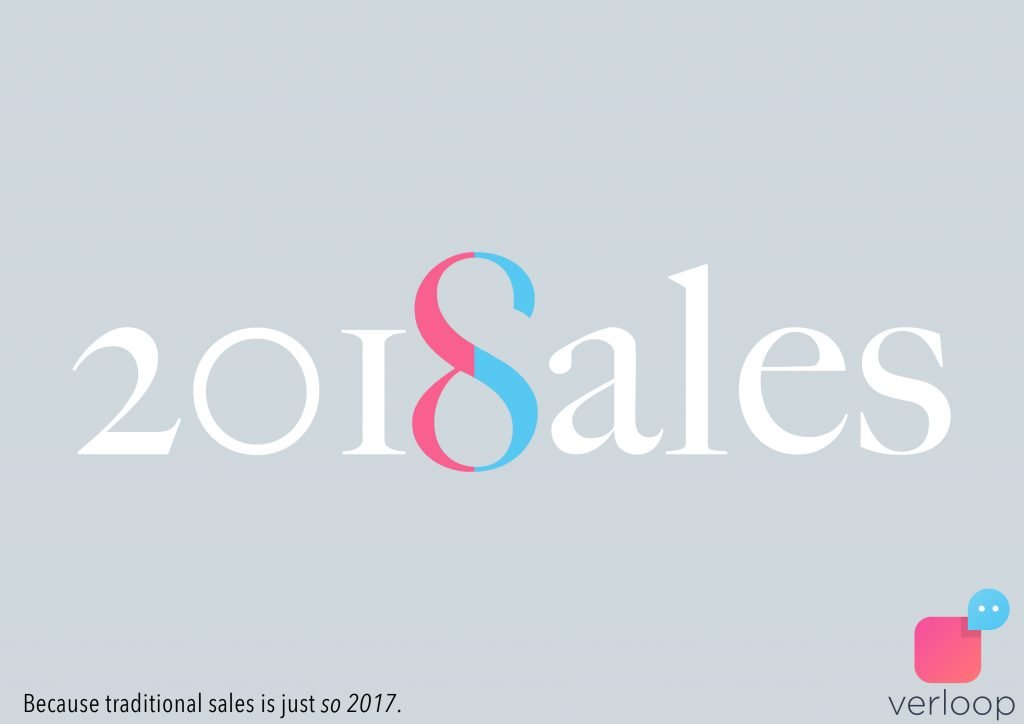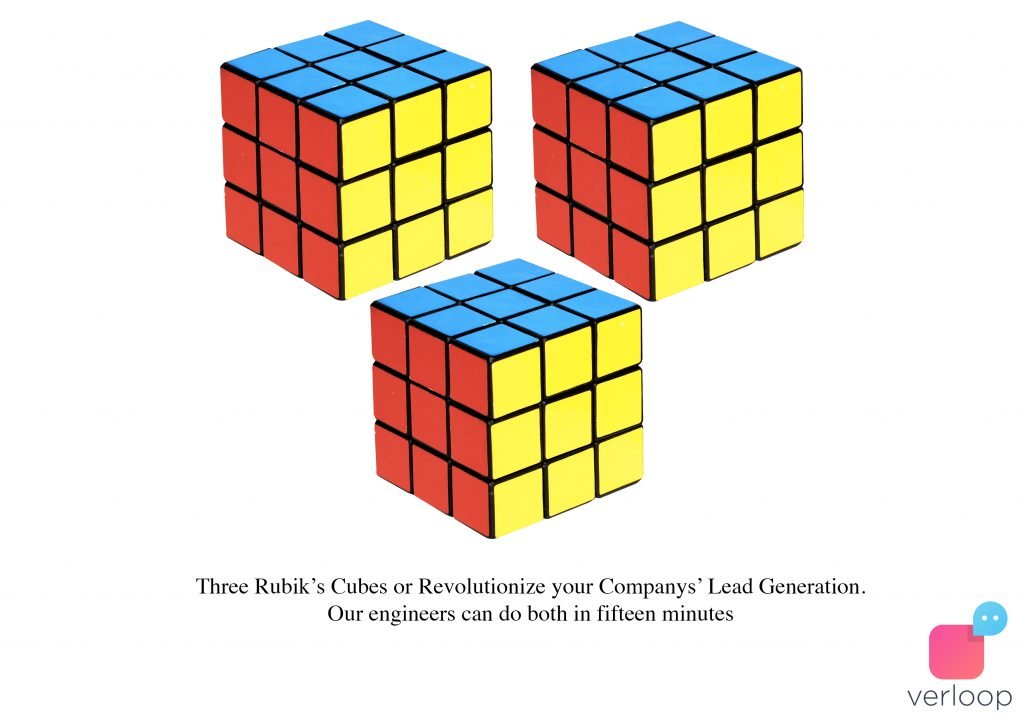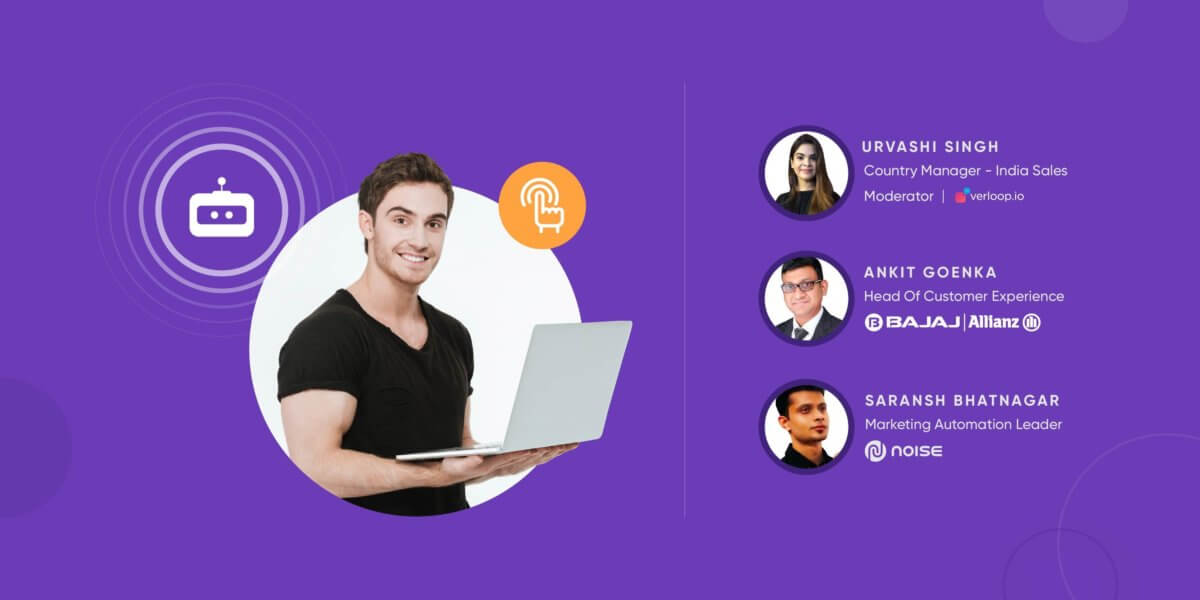2018 is the Year We Change Sales

2018 is the Year We Change Sales
That’s it, I’ve had it.

No more spammy email blasts, no drone-like cold calling, scripted pitches, blind as a bat A/B testing, wayward retargeting, pointless robocalls, 18-page form fill requirements or MQLs and SQLs that tell us nothing.
New year, new you.
As I’ve said before, 2018 is a make or break year for Chatbots. All the hype that led into 2017 now has to be validated.
We use bots everywhere. We use them to check the weather, to order new shoes, as personal therapists, to merge celebrities faces together like we’re God on an off day (!), fight parking tickets and to generally have a good time. You’ve probably even talked to a chatbot and not realized it. Gartner claims that by 2020, the average person will have more conversations with bots than with their spouse.
All of this is astounding given that Chatbots aren’t even half as smart as we could make them. Short of passing the industry standard Turing Test, most bots on the market don’t even possess a functioning emotional intelligence aspect to them.If you Google the question, “How to be better at Sales”, in its featured snippet Google will list out 9 major changes you need to make as a salesperson/organization.
The only problem? Most companies and employees don’t do that. Because in a world of absolute information, businesses have been corrupted absolutely. Customers are no longer individual people, each with hopes, dreams, and desires, but just numbers on an excel sheet. We’re now at a point in global commerce, when being data-driven is more important than being customer driven.Included in this list, are things like, ‘Go the Extra Mile’, ‘Add-On, Upsell or Cross-Sell’, ‘Pay attention to Customer Psychology’ and ‘Learn from Successes and Mistakes’.
I was talking to a Digital Sales consultant at a symposium recently, and he was telling me about how he managed to get a “whopping 7%” conversion rate for a company he recently worked with. And he kept telling me about it, until my rather soft-spoken colleague asked him the question that I didn’t realize needed to be answered.Wordstream estimates that across industries, the average landing page conversion rate is 2.35%, and even companies in the top 25th percentile are only converting at a marginal 5.31% or higher.
Think about it. Look around the room, the coffee shop or office you’re sitting in and think about what life would be like, if 9 out of every 10 people you interacted with, turned around and walked away almost as soon as they saw you. Imagine what life would be like, if that day was the best day of your life.“How much could you convert if those customers were at this symposium?”
In the world of profit maximization and immense returns, you’d think companies world over would be rehauling their sales efforts. Here’s the thing, businesses aren’t just lagging; they’re actively doubling-down on these bad practices. Websites now have more forms, more gated content, more nurturing emails, more cold calls and more outbound advertisements.
 If you take a step back and revisit this scenario, it’s astounding how marketers and salespeople gloat about their 5% conversion rates, when by extension that means that 95% of the general population, who they struggled to acquire through extensive content creation, paid promotions and expensive infographics just left, disappointed.
When 95% of your potential customers leave your store unfulfilled, it’s time for some serious introspection. Which brings us back to my colleagues’ question, how many people could you sell to if there were in the same room as you?
If you take a step back and revisit this scenario, it’s astounding how marketers and salespeople gloat about their 5% conversion rates, when by extension that means that 95% of the general population, who they struggled to acquire through extensive content creation, paid promotions and expensive infographics just left, disappointed.
When 95% of your potential customers leave your store unfulfilled, it’s time for some serious introspection. Which brings us back to my colleagues’ question, how many people could you sell to if there were in the same room as you?
Face-to-face selling is personalized, your problems are cleared in real time, using language that you understand and with a pitch that is tailor-made to your client. All of which is the exact opposite of what happens in online sales today. Companies use a one-size-fits-all policy, sending the exact same email to a hundred thousand people and expecting all of them to fall in line. In what is my probably my favorite content about Chatbots, early last year, a fellow participant in the Bots race, Drift took it upon itself to identify how bad this problem actually was. They manually reached out to 433 B2B companies in order to measure their response times. Keep in mind this is just response time, not even pitching to a client like we’ve been discussing, just your bog-standard response. And in a 22-minute piece here, they detail the results. (For context, the ideal timeframe for responding to leads, according to a study from InsideSales.com/Harvard Business Review, is 5 minutes or less.)
Further data gathered by InsideSales.com found that the time between lead generation form submission and a salesperson making contact has a direct effect on whether or not those leads become clients. In particular, their research suggests that:“We found that 93% of companies are ignoring the 5-minute rule. Just 7% of companies responded to sales inquiries in 5 minutes or less, while a whopping 55% of companies took longer than 5 days to respond.”
“The odds of contacting a lead if they are called within 5 minutes are 100 times higher versus one called in 30 minutes. The odds of qualifying a lead if called in 5 minutes are 21 times higher versus 30 minutes.”
The answer would seem simple, 24/7 human support. But that presents itself with more problems than solutions.
- The presence of this 24/7 human support is pretty expensive ($15, per HOUR on average),
- It’s volatile; a single bad representative can mean hundreds of disappointed and frustrated customers.
- It also can’t be scaled up easily, are monotonous, require constant monitoring and with the shift towards messaging, customers hate phone calls.
This is when the Chatbot industry steps in and steps up.
Chatbots change Sales this year, not next year, not next decade.2018 is our year.
Chatbots are the perfect tool, at the perfect place, at the perfect time. Social Media is no longer the unkillable beast it used to be and companies are following customers onto platforms as people gravitate towards messaging. Various companies already use chatbots, like Sephora, eBay, 1–800-Flowers, H&M and Pizza Hut and they’ve seen immense gains from it. Think of your bot like a sales cyborg; half man, half machine, fully revolutionary.2018 is our year.
We recognized that improving efficiency and efficacy of marketing and sales efforts were two of the biggest pain points companies that approached us had. And with every customer that we helped and each message that flowed through our systems, we became even more adept in the art of automation. 2018 will be better, we’ll make it so.2017 was a good year for Verloop.
12 months, 28 enterprises and 317 million messages.






